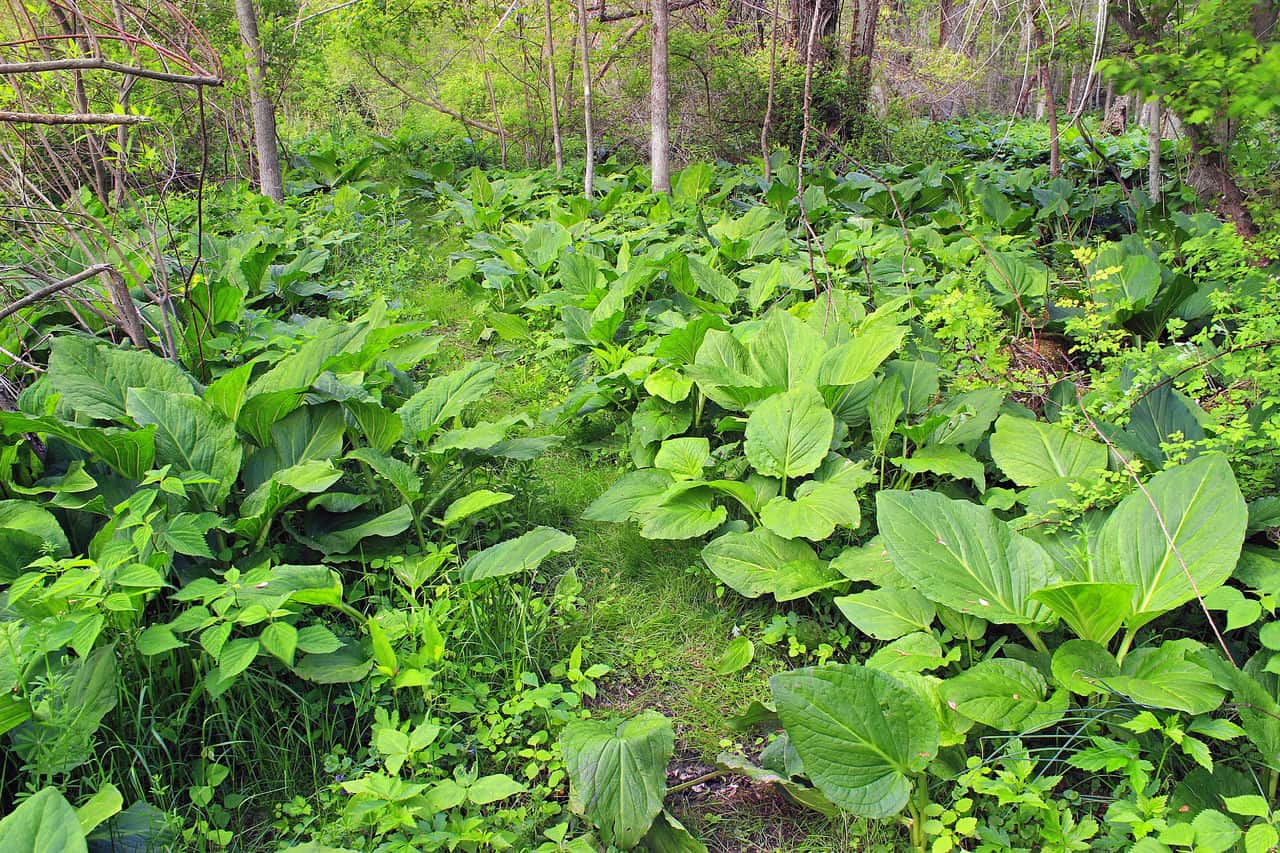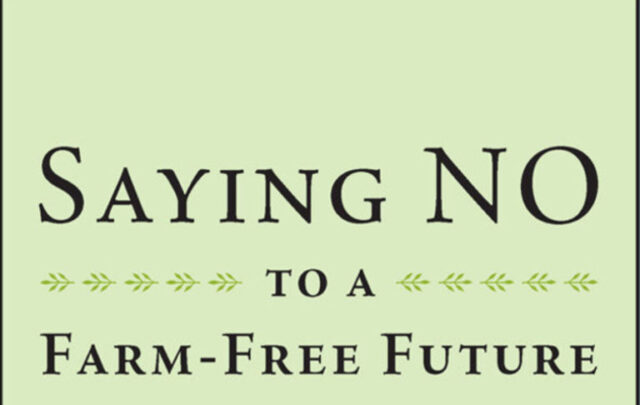- 90% of crop varieties in the farming industry have been lost over the last century
- 95% of the calories consumed throughout the world come from only 30 plants – 60% of which come from the big three: rice, wheat, and corn
- Permaculture, a gardening method that works with nature rather than against it, encourages diversification of crops and may be beneficial for small-scale farmers
- Three-sisters gardening is a proven method used by the Iroquois tribe that allows a beneficial relationship between corn, beans, and squash
With reflections of weakness across our society’s systems, homesteaders have a significant advantage in the area of food.
By independently cultivating one’s own food source, the volatility of the food supply chain and the systems that keep goods and services in place aren’t as immediate a concern.
And to harvest one’s own meal by the labor of their own hands comes with a sense of accomplishment. Accomplishment that acts as the fuel needed to weather any adversity that may come our way.
And adversity, we’re never short of.
But there is a concern among food systems that even homesteaders and farmers might not be isolated from. And that’s the decline of seed and crop varieties across the globe.
Let’s explore how and why we’re seeing a decline in crop variety and how homesteaders can benefit from certain gardening philosophies such as permaculture and agroforestry.
90% of Crop Varieties Have Been Lost Over the Last Century
Plentiful Lands, FAO

TOM HAUK / UNSPLASH
Our world functions as a beautifully intricate system of various plants, animals, and ecosystems all intertwined with one another.
And the enormous variety we find in food crops provides us with various beneficial vitamins and nutrients our bodies need for flourishing.
But there’s been a steady decline in the variety of crops across the globe in recent decades, reducing the diversification of vegetables to just a few species.
Research from the Food and Agricultural Organization (FAO) shows that over 90% of crop varieties in the farming industry have been lost over the last century (FAO).
And today, 95% of the calories consumed throughout the world come from only 30 plants – and 60% come from the big three: rice, wheat, and corn.
Thus, most of the food consumed today is energy-dense and high in caloric value but is depleted of vitamins and nutrients.
So how did this all happen?
 ROBERT WIEDEMANN / UNSPLASH
ROBERT WIEDEMANN / UNSPLASH
Much of the decline we see in crop diversity can be attributed to the practices used in large-scale farming.
With a focus on cultivating fewer crops that provide a much higher yield, acres of farmland are used to grow these crops, thus reducing space for a wider variety of crops to grow and be consumed.
The farming process has become so fine-tuned for certain crops such as wheat and corn that they’re grown faster and more efficiently than what would otherwise be considered natural. Being genetically modified to withstand seasonal changes along with the usage of pesticides and synthetic fertilizers, it’s no wonder that these super-crops are a much more lucrative pursuit within the farming industry.
And therefore, hyper-specialization in fewer crops leads to the decline of variety. As is with the animal kingdom, lack of reproduction of certain species eventually leads to extinction.
Expanding Vegetable Gardens into the Surrounding Terrain Provides an Array of Benefits

FOOD FOREST / PXHERE
The key to preserving the diversity of food sources is to continue growing a variety of crops rather than prioritizing a select few.
Political activism between organizations and think tanks sees an uphill battle in attempting to make changes within the farming industry.
But from a homesteader’s perspective, a simple change in philosophy can help preserve food variety within one’s own garden and community.
Traditional gardening and small-scale farming take more of an exclusive approach to designating planting locations.
Specific grow beds are made for specific plant varieties. For example, cabbage patches are generally kept separate from where carrots are grown. Tomatoes are grown in one location, potatoes in another.
And while this approach certainly has its own benefits, there is another approach that may provide an even larger array of benefits including the preservation of plant variety.
Inward Gardening vs Outward Gardening
By recognizing how plants related to their natural environment, we can provide the optimum conditions for them to flourish in. Rather than carving out and preparing growing locations for specific vegetables according to our preference, it may be beneficial to grow vegetables that are naturally inclined to the surrounding terrain.
Permaculture is the philosophy of gardening with nature rather than against it. It’s the philosophy that plant diversity exists and flourishes in wild, natural environments without the need for human intervention, and thus a built-in system is already at work.
Recognizing how that system works and working alongside it is the key to permaculture and is the reason why many permaculture gardeners are reaping benefits that traditional gardening doesn’t quite provide.
Permaculture Gardening Works with Nature Rather than Against it

APPLE TREES / SKYLAR JAY / UNSPLASH
Permaculture is best described as a method of gardening that works alongside nature’s systems, cultivating a harmonious environment that benefits all parties involved.
Where a traditional garden might have a designated perimeter for growing a certain type of vegetable in a certain location, the permaculture approach would be to allow vegetables to grow freely among the surrounding trees and foliage that grow naturally in that environment.
Companion planting is an element of permaculture that recognizes certain plants grow well with others, while other plants may be harmful to each other.
For example, parsley and basil are good companions for tomato plants due to their ability to deter insects. And cucumbers should be grown among sunflowers due to the sunflower’s ability to support the climbing plant and to provide shade.
Here are some free companion planting charts to use.

FOOD FOREST ILLUSTRATION / WIKIMEDIA COMMONS
Agroforestry, a similar type of gardening that incorporates agricultural crops among native trees, and silvopasture, the method of raising livestock with trees and foliage, both share deep permaculture elements.
Some permaculture gardens incorporate wild geese due to their tendency to eat weeds.
By allowing vegetable gardens and the native environment to cooperate with each other, the end result is a system that essentially runs itself. Ultimately, less maintenance is required from the gardener as nature does most of the work.
How it’s beneficial for crop diversity
Because permaculture puts a heavy emphasis on allowing the complexities of nature to work themselves out, it gives room for a variety of plants to grow.
Whereas the traditional gardening approach would be to decide which vegetables to plant based on preference, the permaculture approach would be to identify which vegetables are native to the region and focus on cultivating those.
And with the principles of companion planting involved, there’s much more room and opportunity for a variety of plants to grow amongst each other.
If you’re interested in learning more about permaculture, here are some great online permaculture courses that will help you get started.
Three Sisters Gardening: A Native Growing Method with a Proven Track Record

THREE SISTERS PLANTING / PUBLIC DOMAIN
Getting started with permaculture gardening can be as simple as implementing some companion planting in your garden.
The Iroquois tribe believed that corn, beans, and squashed thrived when grown together, and for good reason. All three crops provide substantial amounts of nutritional value and have a symbiotic relationship when grown together. They referred to this growing method as The Three Sisters.

THREE SISTERS PLANTING / WIKEMEDIA COMMONS
There are several reasons why the Three Sisters work together so well.
- The corn stalks work as a natural support for the bean vines to climb while the bean vines strengthen the corn stalks from gusty winds.
- Bean plants infuse nitrogen into the soil, improving fertility.
- The squash vines act as shade for the soil which prevents weeds from growing too high and also keeps the soil moist.
- The spines on the squash plant act as a deterrent for pests that may feast on any one of the sisters.
Furthermore, this combination of crops provides almost all of the amino acids, carbohydrates, and fats necessary for the body to survive. They’re a resilient crop combination and are an excellent asset in long-term survival situations.
Check out Tara Dodrill’s guide on how to plant The Three Sisters.
What Can You Do?
With the future of our food sources remaining questionable, much debate arises regarding the direction agencies ought to take.
But for those living independently and in smaller-scale communities, perhaps the answer is simple. Rather than viewing food gardens as isolated entities, maybe the better approach is to see how our food relates to the surrounding environment and communities.
By implementing permaculture principles into our gardening and expanding beyond our typical boundaries, perhaps it will allow us to build trust with our surrounding neighbors and community members.
By collaborating with our community members and fellow growers, and sharing a variety of crops throughout the landscape, the diversity of food will expand beyond what we’d be able to manage singlehandedly.
There is something to be said about community gardening and the advantages it has over solo gardening, and permaculture may be the key to unlocking it.
References
Ask a Prepper. (n.d.). The Three Sister Garden Plans: How To Get The Most Out Of Every Square Foot https://www.askaprepper.com/the-three-sister-garden-plans-how-to-get-the-most-out-of-every-square-foot/?utm_source=pocket_mylist
FAO. (n.d.). What is Agrobiodiversity? Home | Food and Agriculture Organization of the United Nations. https://www.fao.org/3/y5609e/y5609e02.htm
FAO. (n.d.). Dimensions of need – Staple foods: What do people eat? https://www.fao.org/3/u8480e/u8480e07.htm
Permaculture Apprentice. (2021, June 11). How to choose the most suitable plants for your food forest. https://permacultureapprentice.com/choosing-plants-food-forest/?utm_source=pocket_mylist
Plentiful Lands. (2021, July 28). Why are crop varieties disappearing? https://plentiful-lands.com/feed-the-future/?utm_source=pocket_mylist
Resilience. (2021, May 10). Agroforestry: An ancient practice with a promising future? https://www.resilience.org/stories/2021-05-10/agroforestry-an-ancient-practice-with-a-promising-future/?utm_source=pocket_mylist
Treehugger. (2021, October 26). Why gardeners need to be outward-looking. https://www.treehugger.com/why-gardeners-need-be-outward-looking-5206397?utm_source=pocket_mylist





